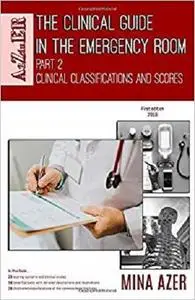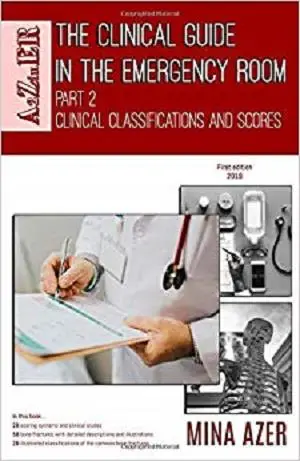The Clinical Guide in the Emergency Room: Part 2: Clinical Classifications and Scores (A2ZinER) by Mina Azer
English | April 7, 2019 | ISBN: 1092927069 | 111 pages | PDF | 3.70 Mb
English | April 7, 2019 | ISBN: 1092927069 | 111 pages | PDF | 3.70 Mb
In this book…
- 29 scoring systems and clinical scales covering the common fields of emergency medicine.
- 58 bone fractures with detailed descriptions and illustrations
- 28 illustrated classifications of the common bone fractures.
- Clinical hints, pitfalls and management options according to the most recent guidelines.
A2ZinER©
is the guide of the lonely junior resident during the night shift. We assume that you have a good grasp of the basic medical knowledge. So, we won’t discuss any theoretical aspects, mechanism of action or any other boring topics. All clutter has been ripped down leaving the very core of the addressed topics, bearing in mind the old – but still true idiom; “common is common”. In this book, you will find only the most common answers to the most common questions asked by younger colleagues.
Part 1: Diagnostics and Investigation
A practical approach to medical diagnostic in the context of emergency situations. When to order a diagnostic test? how to perform it? and how to interpret its results? Diagnostic tests include ECG, Chest X-ray, skeletal radiology, Abdomen CT, Brain CT, Laboratory diagnostics and emergency sonography (eFAST).
Part 2: Clinical Classifications and Scores
Gallery of common bone fractures, classification and management. Commonly used scoring systems and scales with a focus on emergency situations and its interpretation according to the most recent guidelines.
Part 3: Management of emergencies
A brief and to-the-point management plan for polytrauma, nontraumatic acute chest pain, acute abdomen, cerebral stroke. Glossary of frequently used medications (pain management, antibiotics, fluid therapy, etc..). Emergency maneuvers such as resuscitation, chest decompression, wound management, etc…



